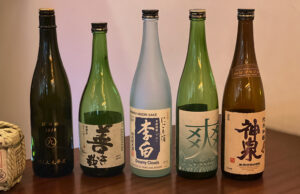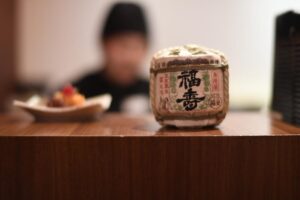Ginjō
Japanese sake is impressed by a variety of flavors, much more than a good wine. To facilitate orientation in the world of sake, on our website we describe the different classes of sake. Ginjō is one of the two types of sake in the medium premium category.
What criteria must a Ginjō sake meet?
The prescribed minimum degree of polishing of the rice grains in a Ginjō sake (吟醸) is 60 %. Thus, at least the outer 40 % of the rice grain must be polished away.
Ginjōshu, as sake of this category may also be called in Japan, has the same regulations as Junmai Ginjō in terms of rice polishing grade and brewing method.
The difference is that a small amount of brewing alcohol is added to create a more aromatic sake. The production of Ginjō is extremely labor intensive, often using traditional methods and tools, as well as special yeasts. Fermentation takes place at lower temperatures and lasts longer than usual.
How do you taste and drink Ginjō sake?
Ginjō sake is characterized by a slender body and has a fruity aroma like apples and bananas.
Ginjō is best served chilled at around 10 °C as it has a wonderful aroma. Warm temperatures are not ideal, as the aroma dissipates due to the heat.
A white wine glass or nosing glass is suitable as a drinking vessel for Ginjō, which allows it to release its fragrance. Other glass bowls or cups are also suitable for Ginjō enjoyment.
Sharing pleasure in Japanese
SUSHIYA is passionate about Japanese cuisine and culture. In our restaurant sansaro you can encounter the fascinating Japanese cuisine or have it delivered to your home. On our homepage, Facebook and Instragram we always give insights into news and interesting topics.

Sake Tasting 29 May 2022
Outlook for the sake tasting on May 29, 2022 At the end of May we will again host a sake tasting, Sunday, 15.30h. Before Corona had

Review Sake Tasting November 1, 2018 - a great event!
Our sake tasting on November 1, 2018 was a great success! Not entirely without pride we have noticed that our Tasting

Review Sake Tasting with Food Pairing on May 1, 2018
Review of the sake tasting on May 1, 2018 at the sushi restaurant sansaro in Munich - where you can get to know Japanese sake and combine it with the right food.